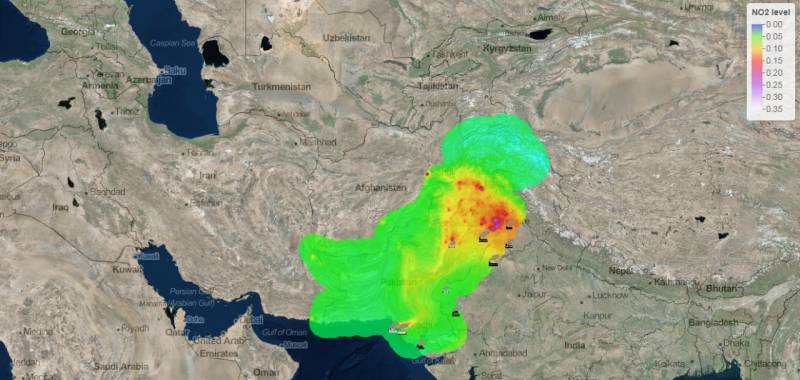
A report prepared by World Health Organization has revealed that Lahore is one of the worst 50 NO2 hotspots in the world with 40 per cent of emissions coming from road transportation and 23 per cent by power generation.
The World Health Organization (WHO) is holding its first Global Conference on Air Pollution and Health at its headquarters in Geneva. The three-day conference will commence on October 30 and continue till November 1 in collaboration with United Nations (UN) Environment, World Meteorological Organization (WMO), the Secretariat of the UN Framework Convention on Climate Change (UNFCCC), the Climate and Clean Air Coalition to Reduce Short-Lived Climate Pollutants (CCAC) and the United Nations Economic Commission for Europe (UNECE).
The conference will be attended by various Ministry of Health and Environment representatives along with other national government officials, intergovernmental agencies, health professionals, civil society and researchers.
The main objective of the conference will be to provide a road map regarding air quality levels. According to WHO pollution is one the most significant causes of premature deaths, causing some 7 million deaths annually, as air pollution in most cities exceeds the recommended WHO Air Quality levels. Whereas household air pollution is a leading killer in poor rural as well as urban homes, due to which 1/3 of deaths occur from stroke, lung cancer and various heart diseases.
Greenpeace will be launching its report on global NO2 emission hotspots along with an interactive map of NO2 emissions globally, including Pakistan as one of the worst out of the 50 hotspots. The new satellite Sentinel 5P started producing data on NO2 in early July, providing unprecedented detail of the global scale on NO2 pollution.
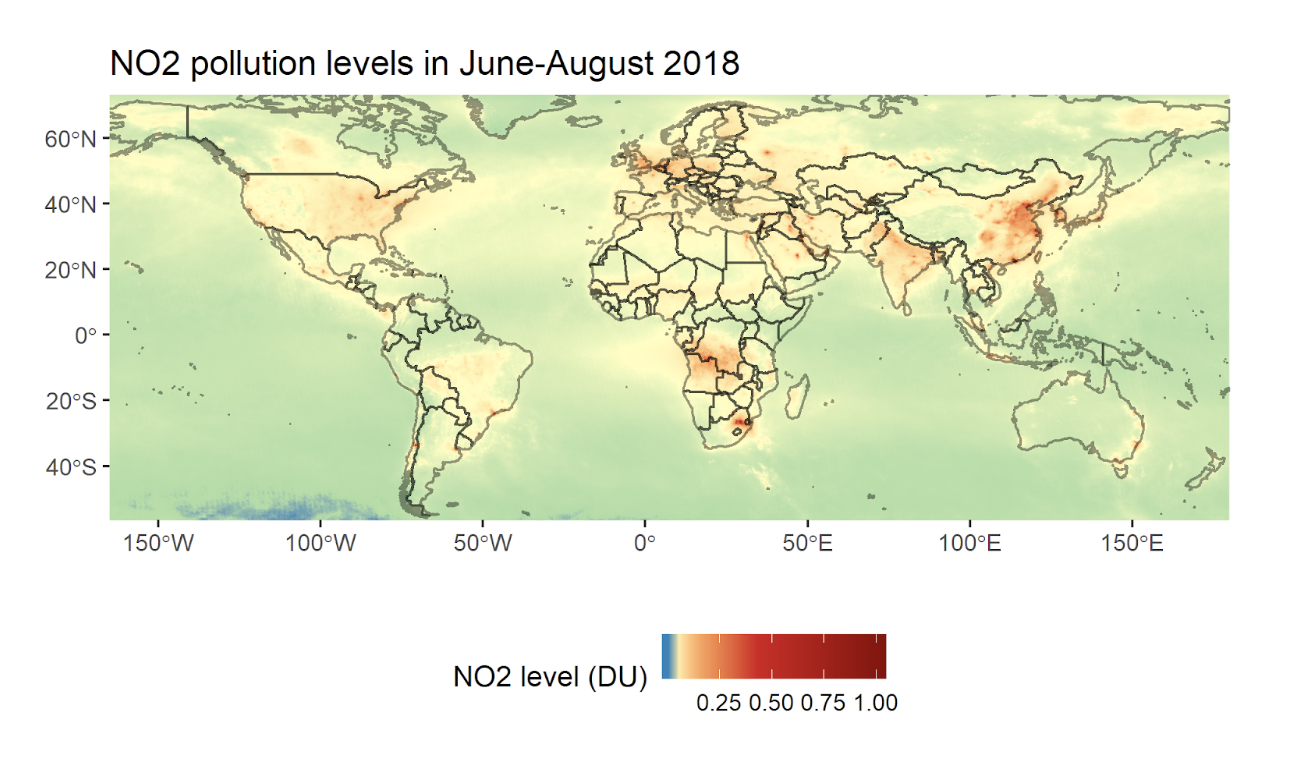
The above image projects the NO2 emission levels from June-August 2018, showing that regions like Asia and South Africa have DU level NO2 emission in between 0.25 to 0.5 levels.
NO2 emission is basically produced from human activities that cause air pollution, like that from fossil fuel burning, which leaves an impact on public health. The NO2 is a major source that leads to the formation of secondary PM 2.5 and Ozone unleashing harmful pollutants to human health worldwide.
The Greenpeace analyzed the report based on satellite imagery of the worst 50 hotspots, its source of production which is majorly power generations and transportations, its tendency and diverse locations. The global list of the largest emission hotspots includes several coal-fired power plants in India, South Africa and Germany, 10 power plants and industrial clusters in China, 14 megacities with very high transport-related emissions comprising Santiago, De Chile, Tehran, Dubai, London and Paris. Other than that, agriculture burning in Congo and Angola are also included in the list.
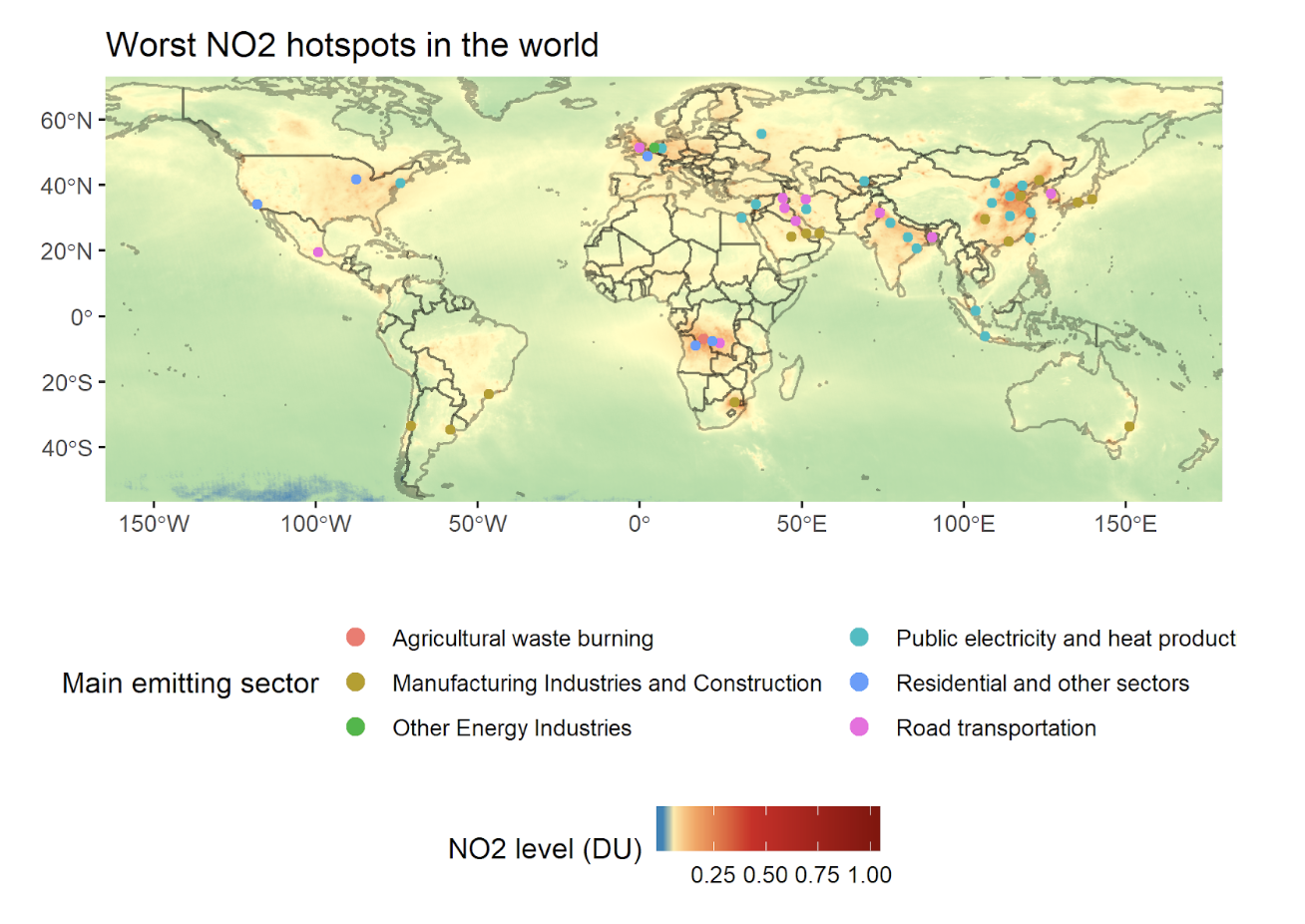
Whereas hotspots like Seoul, Jakarta and New Dehli have a mix of contributing sources comprising of transport, coal power plants and manufacturing.
The animation and satellite image below shows the pollutant plumes from coal-fired power plants like New Dehli, India.
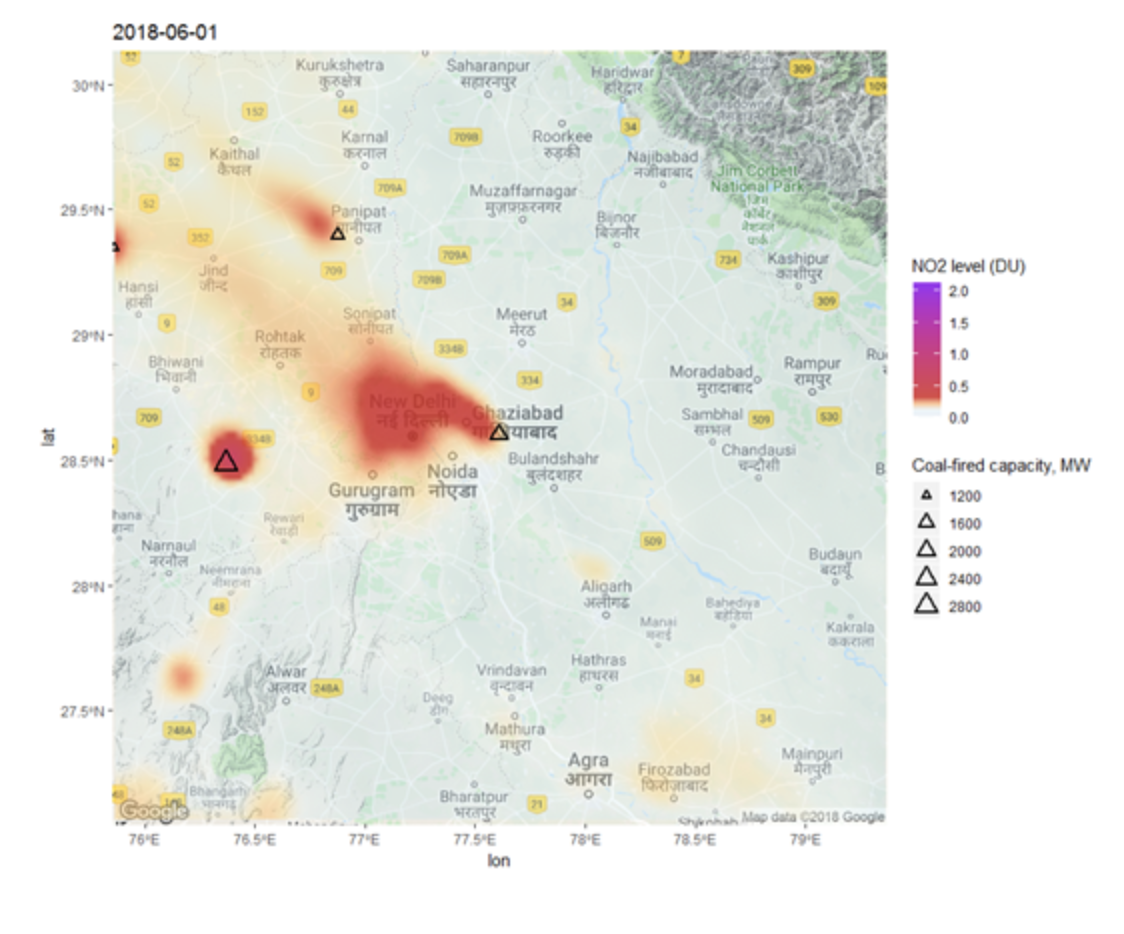
However, the satellite shows images of Seoul as one of the hotspots that has a clear and visible difference of NO2 emissions on a working day with a 0.6 DU level compared to minimum levels on the weekend.
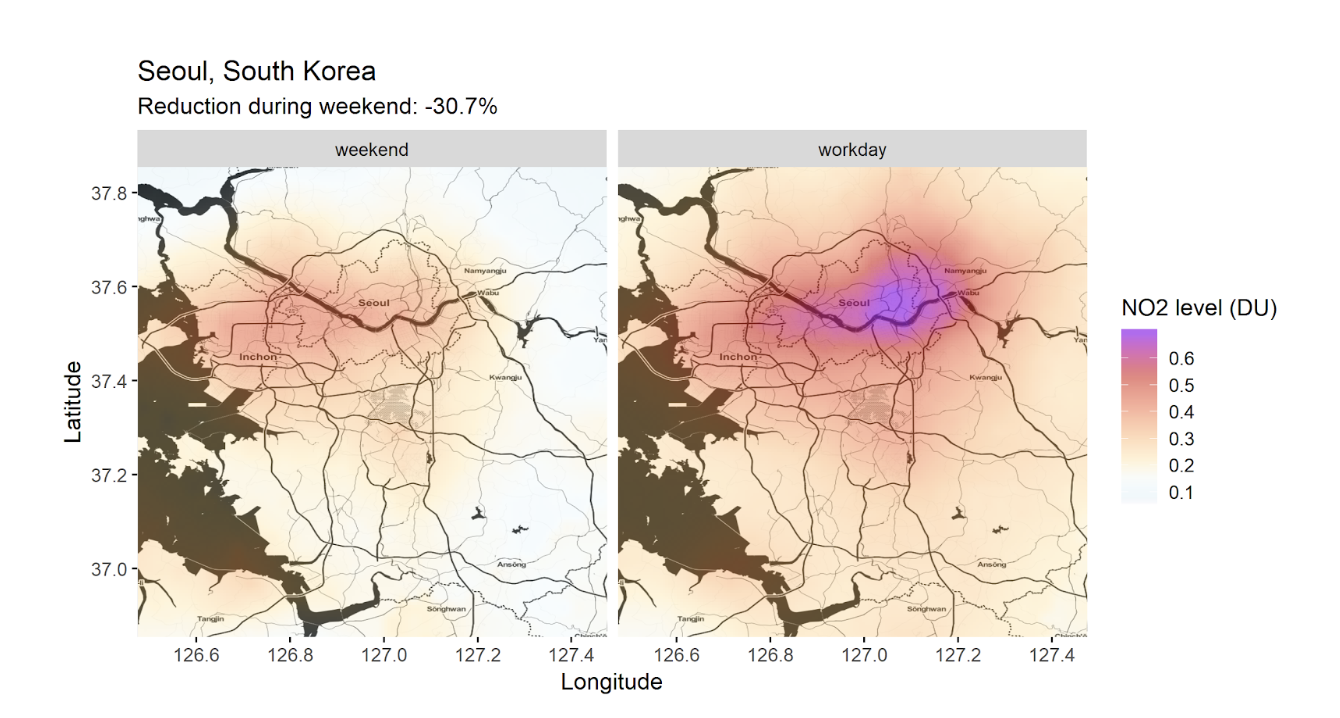
The report is alarming and should raise concern for authorities as Lahore, Pakistan is one of the NO2 hotspots out of the 50 global spots with 40 per cent of road transportation and 23 per cent by power generation as its production source.
According to Greenpeace analysis, power generation from coal and oil is the main source of emissions at the largest number of hotspots, 19 out of the 50, followed by manufacturing industries (14), steel plants and transport (10).
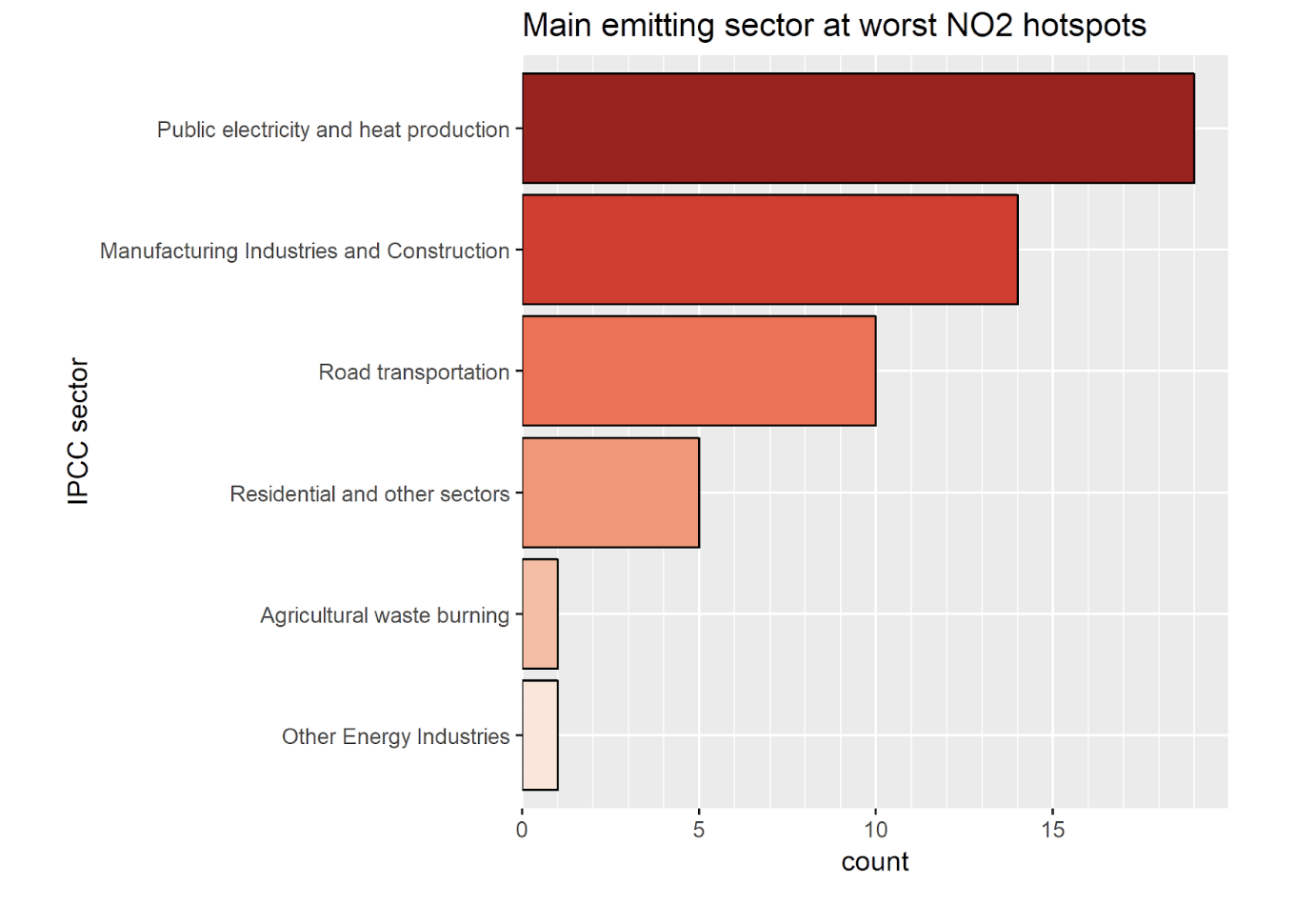
The largest number of hotspots, a total of 10 is found in China, 4 in European Union (EU) and 3 in India, US and Congo.
The conference will be discussing affordable strategies to reduce key pollution emissions from transport, energy, agriculture, waste and housing sectors. Eco-friendly and health-conscious strategies may help reduce climate change and support Sustainable Development Goals for health, energy and cities.
NO2 emission hotspots across six continents portray the global extent and cross-boundary nature of the crisis. Governments and related authorities must urgently take action and come up with policies and strategies that help provide clean and healthy, pollution-free air to all as it is the need of the hour.
The World Health Organization (WHO) is holding its first Global Conference on Air Pollution and Health at its headquarters in Geneva. The three-day conference will commence on October 30 and continue till November 1 in collaboration with United Nations (UN) Environment, World Meteorological Organization (WMO), the Secretariat of the UN Framework Convention on Climate Change (UNFCCC), the Climate and Clean Air Coalition to Reduce Short-Lived Climate Pollutants (CCAC) and the United Nations Economic Commission for Europe (UNECE).
The conference will be attended by various Ministry of Health and Environment representatives along with other national government officials, intergovernmental agencies, health professionals, civil society and researchers.
The main objective of the conference will be to provide a road map regarding air quality levels. According to WHO pollution is one the most significant causes of premature deaths, causing some 7 million deaths annually, as air pollution in most cities exceeds the recommended WHO Air Quality levels. Whereas household air pollution is a leading killer in poor rural as well as urban homes, due to which 1/3 of deaths occur from stroke, lung cancer and various heart diseases.
Greenpeace will be launching its report on global NO2 emission hotspots along with an interactive map of NO2 emissions globally, including Pakistan as one of the worst out of the 50 hotspots. The new satellite Sentinel 5P started producing data on NO2 in early July, providing unprecedented detail of the global scale on NO2 pollution.

The above image projects the NO2 emission levels from June-August 2018, showing that regions like Asia and South Africa have DU level NO2 emission in between 0.25 to 0.5 levels.
NO2 emission is basically produced from human activities that cause air pollution, like that from fossil fuel burning, which leaves an impact on public health. The NO2 is a major source that leads to the formation of secondary PM 2.5 and Ozone unleashing harmful pollutants to human health worldwide.
The Greenpeace analyzed the report based on satellite imagery of the worst 50 hotspots, its source of production which is majorly power generations and transportations, its tendency and diverse locations. The global list of the largest emission hotspots includes several coal-fired power plants in India, South Africa and Germany, 10 power plants and industrial clusters in China, 14 megacities with very high transport-related emissions comprising Santiago, De Chile, Tehran, Dubai, London and Paris. Other than that, agriculture burning in Congo and Angola are also included in the list.

Whereas hotspots like Seoul, Jakarta and New Dehli have a mix of contributing sources comprising of transport, coal power plants and manufacturing.
The animation and satellite image below shows the pollutant plumes from coal-fired power plants like New Dehli, India.

However, the satellite shows images of Seoul as one of the hotspots that has a clear and visible difference of NO2 emissions on a working day with a 0.6 DU level compared to minimum levels on the weekend.

The report is alarming and should raise concern for authorities as Lahore, Pakistan is one of the NO2 hotspots out of the 50 global spots with 40 per cent of road transportation and 23 per cent by power generation as its production source.
According to Greenpeace analysis, power generation from coal and oil is the main source of emissions at the largest number of hotspots, 19 out of the 50, followed by manufacturing industries (14), steel plants and transport (10).

The largest number of hotspots, a total of 10 is found in China, 4 in European Union (EU) and 3 in India, US and Congo.
The conference will be discussing affordable strategies to reduce key pollution emissions from transport, energy, agriculture, waste and housing sectors. Eco-friendly and health-conscious strategies may help reduce climate change and support Sustainable Development Goals for health, energy and cities.
NO2 emission hotspots across six continents portray the global extent and cross-boundary nature of the crisis. Governments and related authorities must urgently take action and come up with policies and strategies that help provide clean and healthy, pollution-free air to all as it is the need of the hour.
